
Hello, Habr! We are introducing a new "Rarity Review" section, which will be published every Friday. Here we will publish reviews of old interesting devices that did not deserve oblivion. Moreover, some of them are relevant to this day.
Today we are going to tell you about the digital camera Sony Mavica MVC-FD73, which stands out among its peers for reliability, image quality and storage method. The camera does not have memory cards, which is natural for 1999, but there is a floppy drive, which is used to write pictures to a floppy disk. When you hold this camera in your hands, you experience a whole range of emotions, because this is a device that became the forerunner of modern cameras with removable media.
Where did we get the rarity?

One of our employees was passing through Spain, where there are many flea markets and flea markets. You can buy anything there - from an antique gramophone to quite modern smartphones.
Walking through such a flea market somewhere near Malaga, an employee saw an unusual camera. Something like a 3.5-inch floppy drive was seen on one side of the camera, which attracted attention. It didn't seem - it really is a floppy socket.

We managed to buy the device for only 5 euros (the cost of the camera at the time of release was $ 599). To get a miracle of technology of the last century for such a low price was due to the lack of charging and, accordingly, the inability to check the device's performance. The seller did not know if this device was in working order or not. But, as it turned out, the camera worked.
What kind of rarity is this?
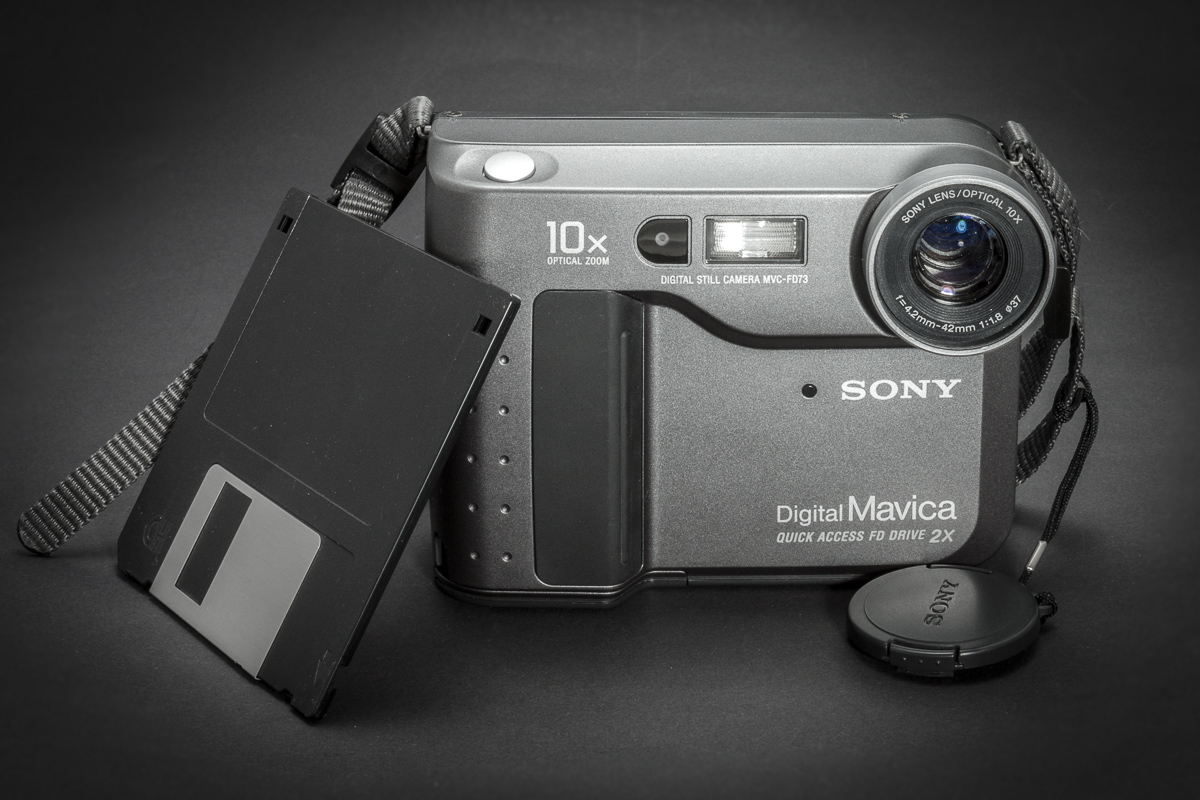
In the late 90s, Sony released several digital camera models with built-in floppy drives. In the early 2000s, Sony continued to release digitals on floppy disks, adding a slot for Memory Sticks, which were terribly expensive at the time.
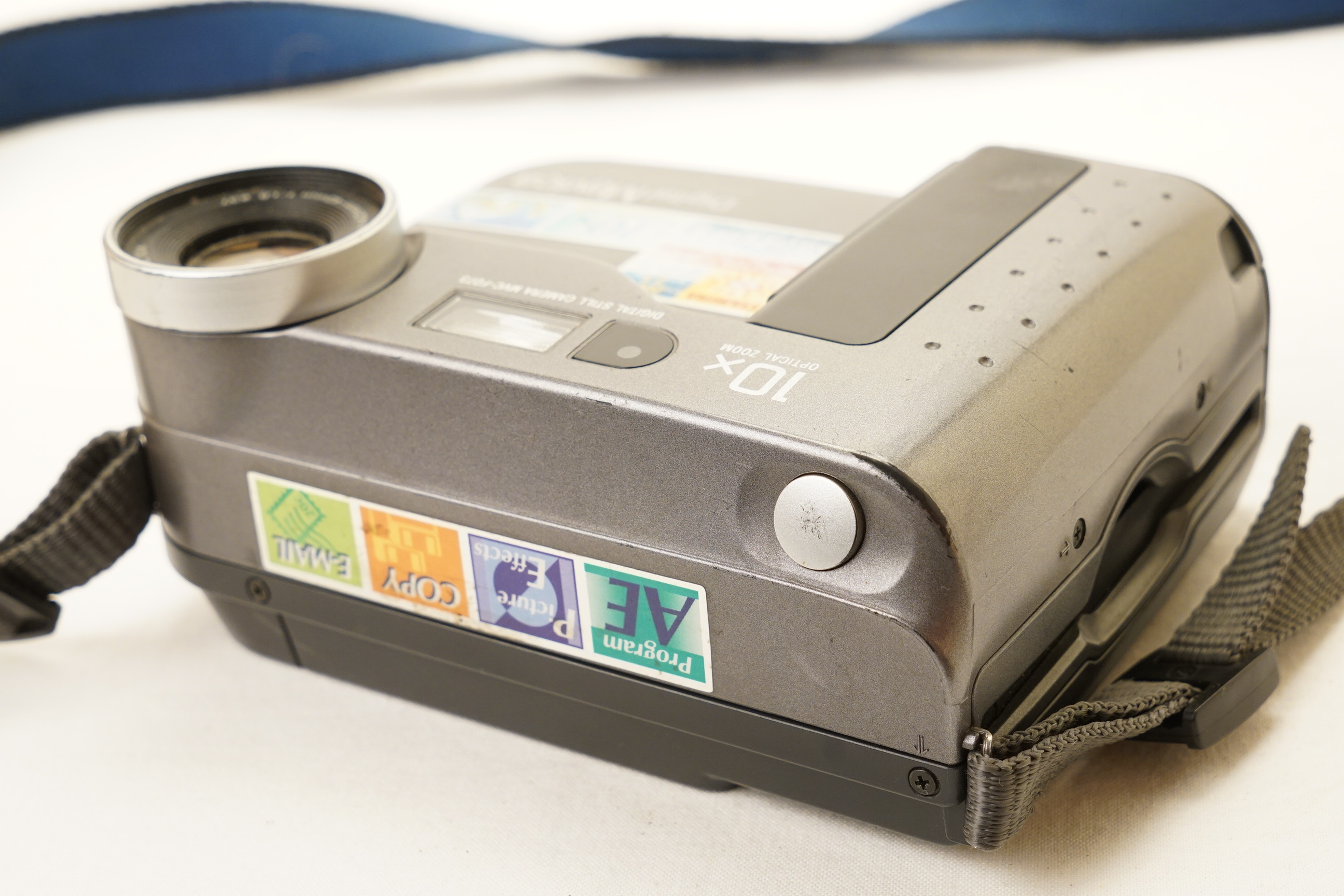
We got our hands on the Sony Mavica MVC-FD73 model, released in mid-1999. This is the third generation of Sony's Digital Mavica digital cameras.

Camera characteristics:
- Zoom: 10X optical and 2X digital.
- Matrix: 1/4 inch CCD.
- Photo resolution: 640x480, 320x240.
- Optics: focal length f = 4.2 - 42 mm (40 - 400 mm in terms of 35 mm format) F1.8-2.9.
- Exposure: automatic.
- White balance: automatic.
- Picture format: JPEG and BMP.
- Media: 3.5-inch floppy disk with 1.44 MB memory.
- LCD display: TFT, 2.5 inches, 165x124 dots.
- Total number of points: 84,260.
- Power: Sony NP-F330 / F530 / F550 battery.
- Flash consumption: 3W
- Operating temperature range: 0 to 40 ° C.
- Dimensions: 138 x 103 x 62 mm.
- Weight: 590 grams.
Complete list of characteristics .
For 1999, it was a cool camera with a lot of features. Of course, it was not suitable for a professional, but as a digital soap dish it was.
What is this miracle of technology capable of?
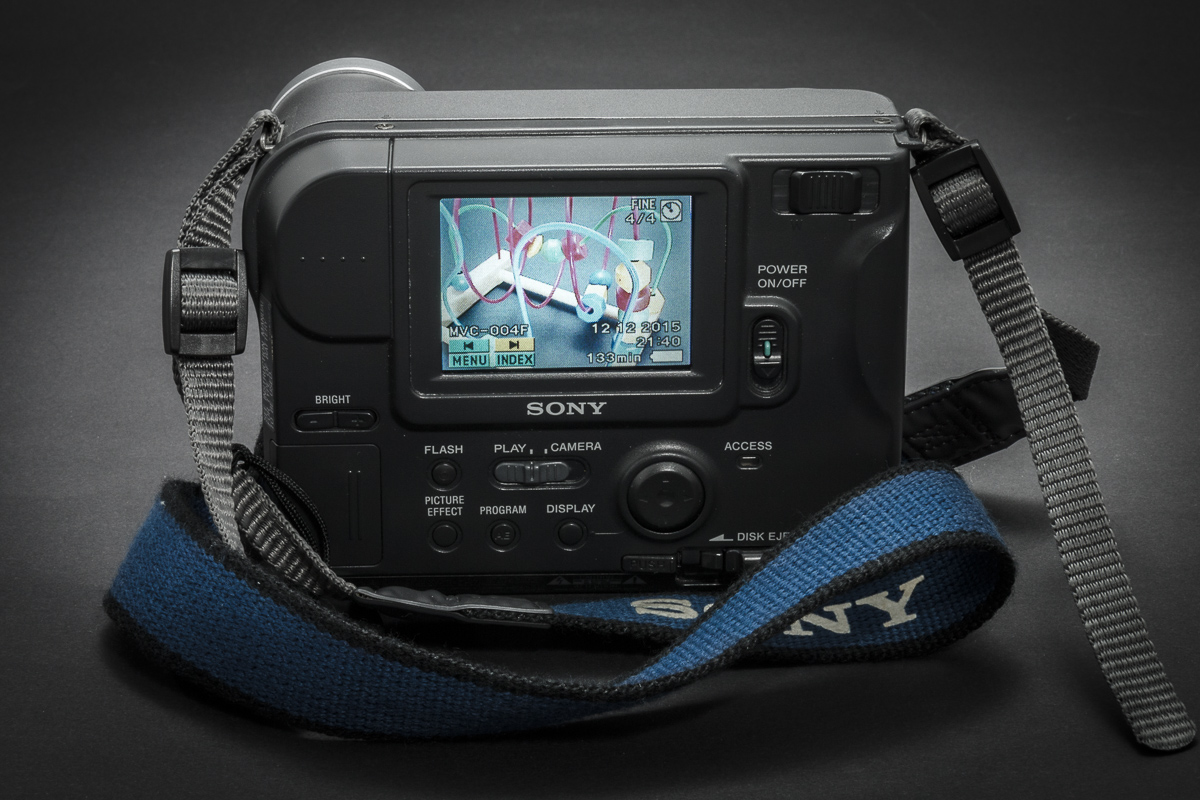
The quality of the images is still impressive - they are quite suitable for the web, for Instagram, Facebook, etc. Of course, the resolution is small, but this is 1999.
We had another Sony camera close at hand, the Cybershot DSC-H100 from 2013. Here is a comparison of photos of the same objects taken with these two cameras + iPhone 6. For convenience, the sizes of all images are reduced to 640x480. One of the pictures shows a laptop from Packard Bell, with the help of which pictures were dumped from a floppy disk to a USB flash drive.
| iPhone | Sony Mavica | Cybershot DSC-H100 |
|---|---|---|
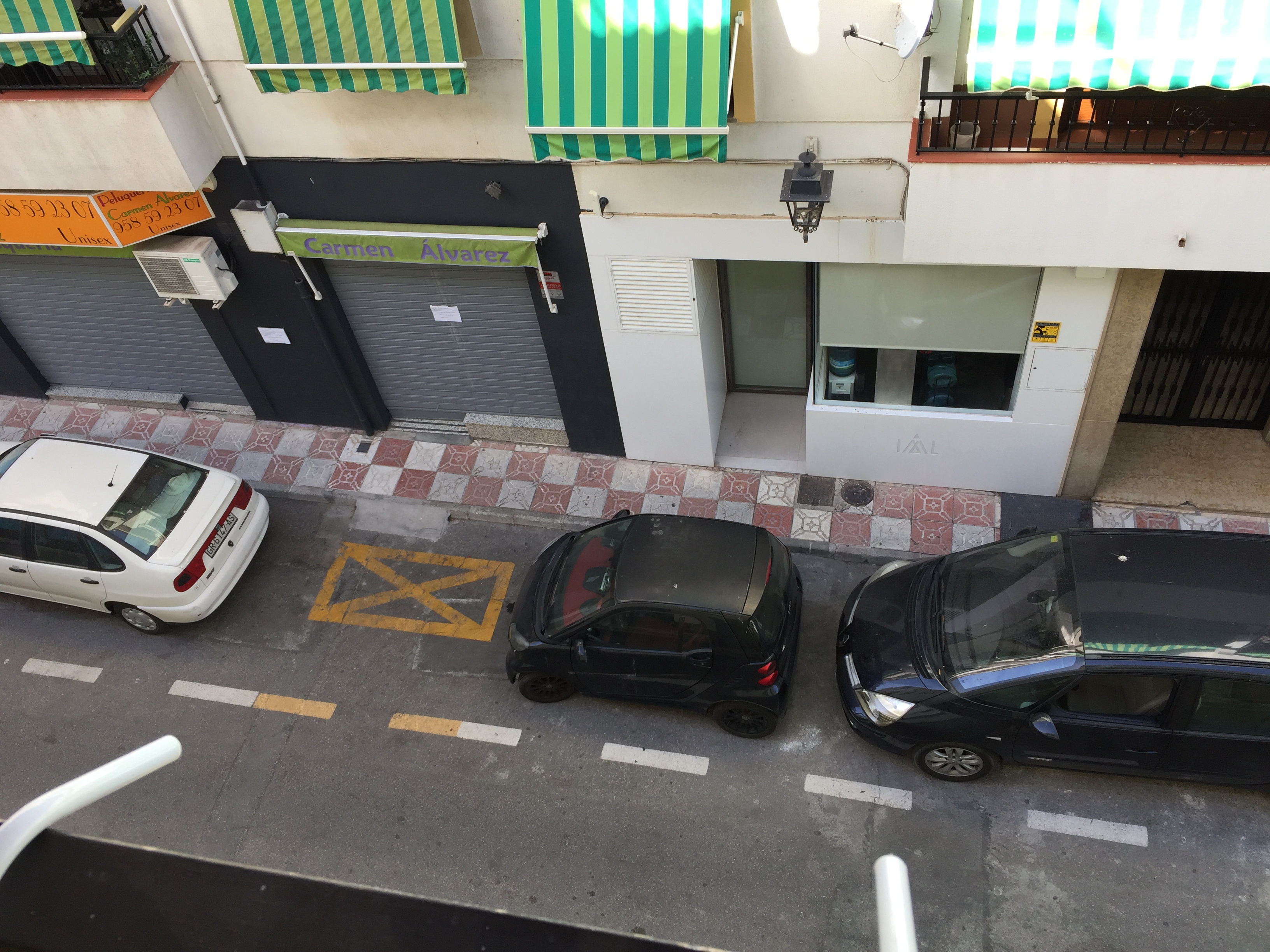 |
 |
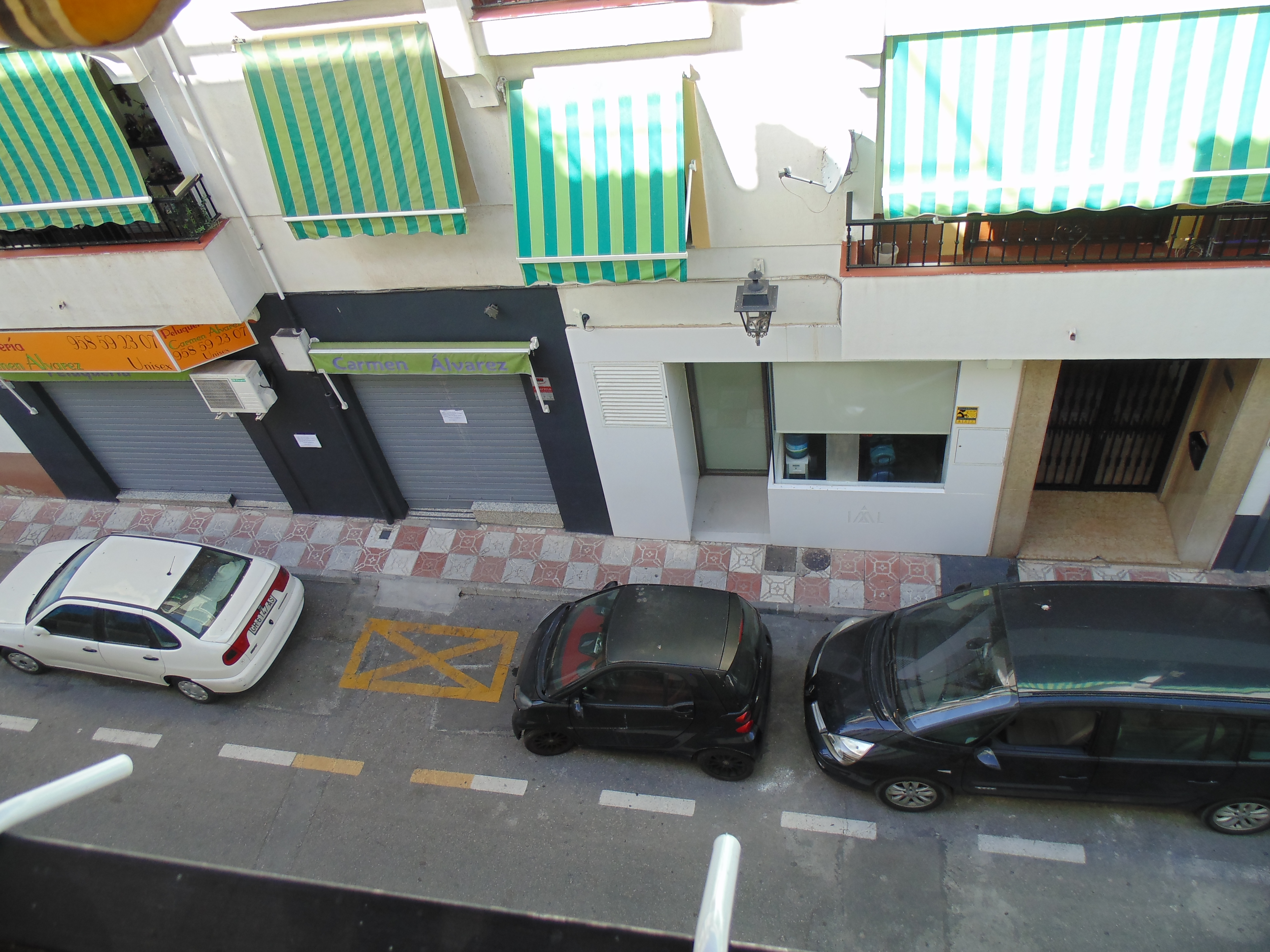 |
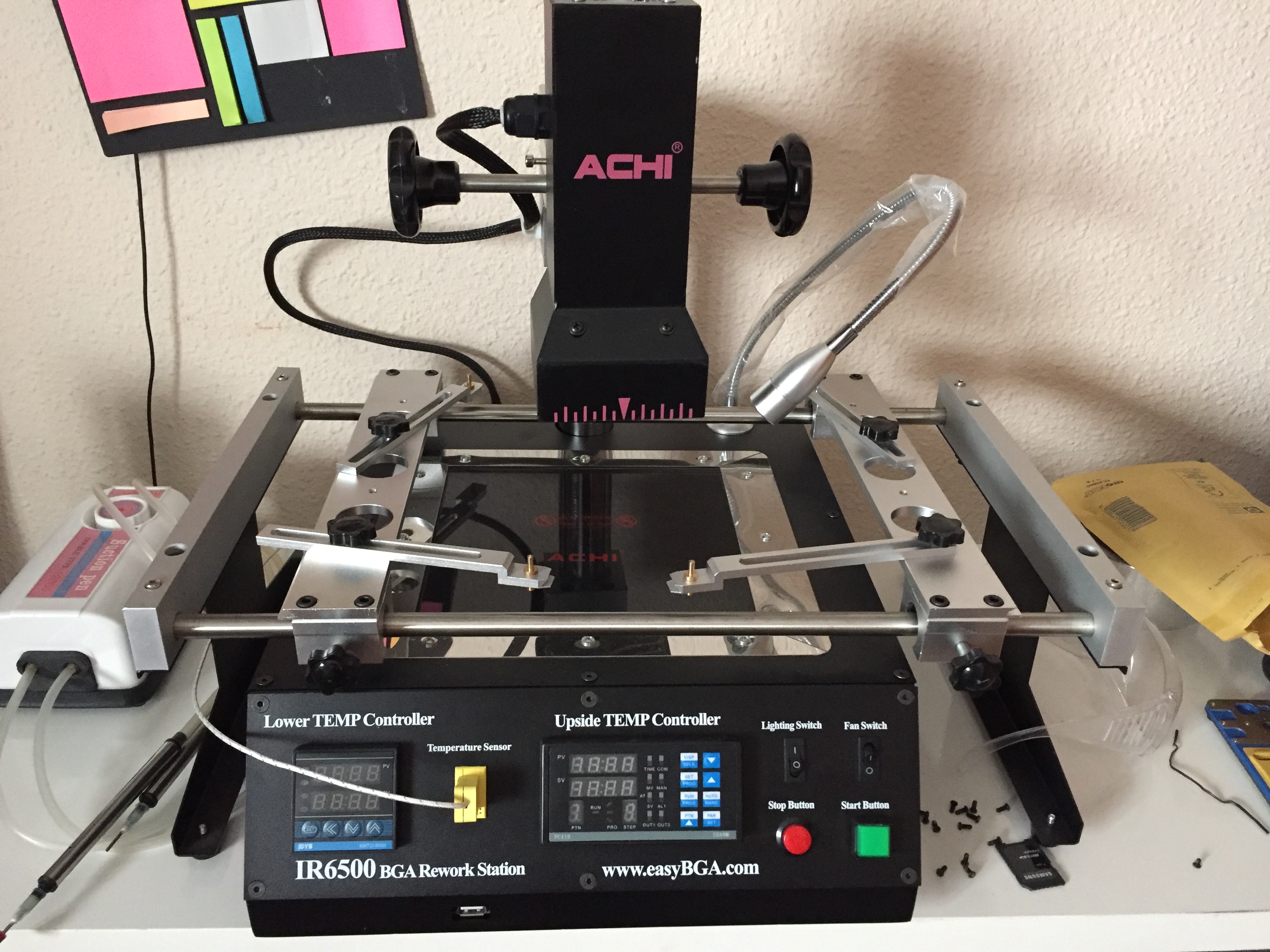 |
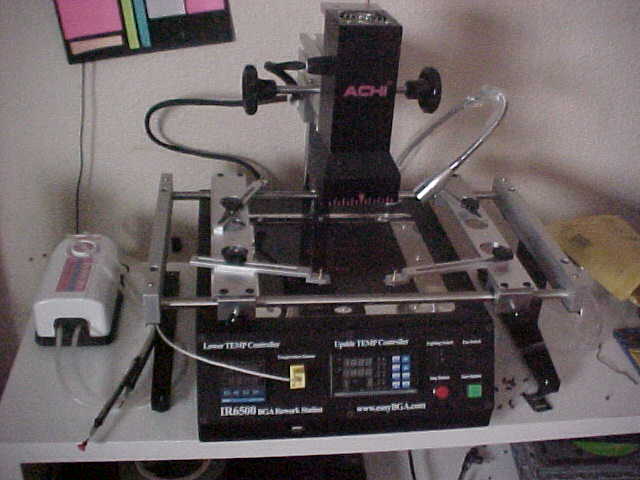 |
 |
 |
 |
 |
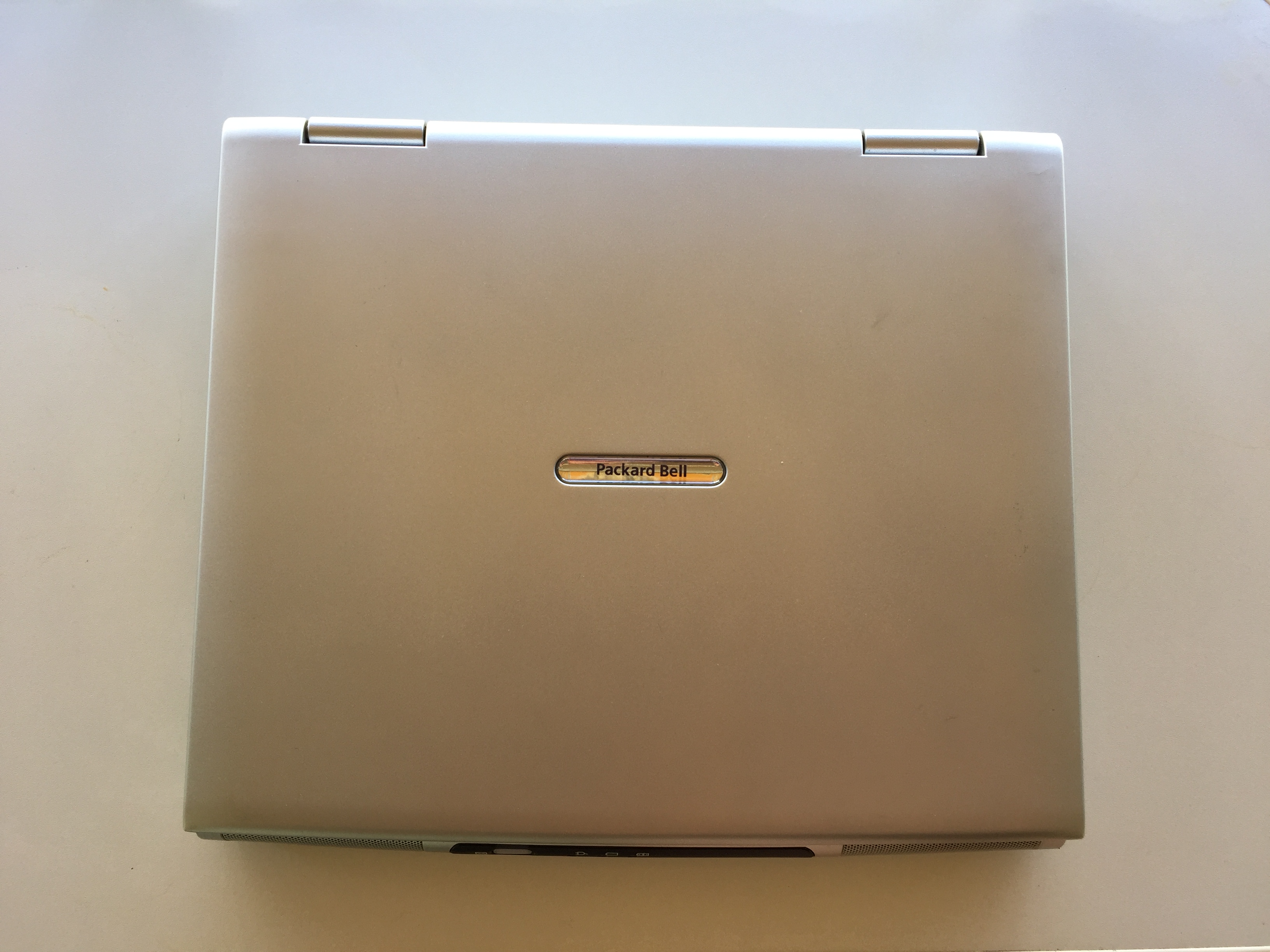 |
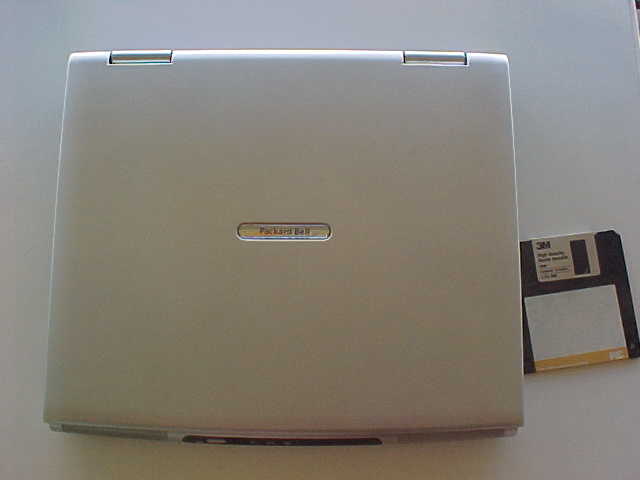 |
 |



Quite decent for a camera that's 20 years old, right?
One of the few drawbacks of this camera is that after taking a picture, you need to wait a little while the information is saved on the diskette. There is a dedicated LED on the back of the camera to indicate drive activity.
Why such a strange decision - floppy disks?
It seems unusual now. But in 1999 it was fashionable and relevant. The fact is that digital cameras of that time required a Serial Port connection to a PC for data transfer. Inconvenient. In addition, it was required to install proprietary software, which was often buggy and did not work as expected.
Floppy disks changed everything. They are compact, relatively capacious (up to 20 photos taken by a camera can fit on one floppy disk), and with their help photos can be transferred to a PC.
If you lived at that time, try to imagine a regular film "soap box". Film is relatively expensive, so you won't be able to photograph everything. You need to carefully choose a frame, evaluate the lighting, count the number of frames remaining. Plus, the film had to be developed, after which it turned out that some of the pictures were unsuccessful or even a marriage.
For the first time, a digital camera with floppy disks made it possible to view all taken frames and delete unsuccessful ones. You could take an unlimited number of floppy disks with you, which were inexpensive, so that on the way, some owners of these cameras accumulated hundreds of pictures. Run out of diskette? We transfer everything to a PC or just insert a new one. That's it, the camera is ready to go!
It was a breakthrough. Yes, sometimes floppy disks were buggy, but most of them are reliable storage media. For example, the floppy disk that we managed to get to test the camera is about 20 years old! And everything works without a "single break" until now.
And there were also all sorts of solutions that expand the capabilities of floppy disks. For example, a SmartMedia memory card with a capacity of 4 to 32 MB. It could be inserted into a special adapter that was perceived by PCs, cameras and other equipment as a floppy disk.
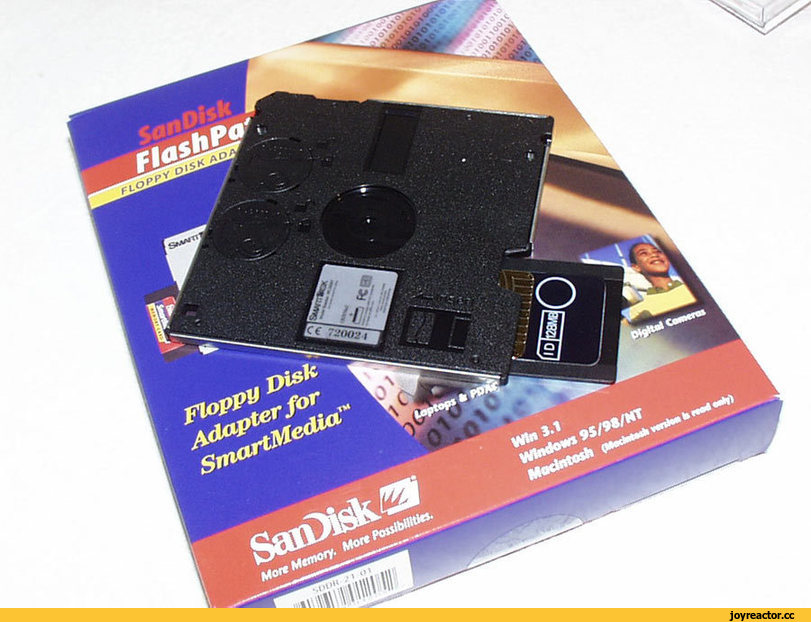
There were similar adapters for Memory Stick format cards. The price was considerable, but it added a bunch of possibilities, since now there was no need to carry floppy disks with you.
What else is interesting?
The camera is equipped with a wide range of functions, including flash, display brightness adjustment, display menu, focus knob, auto focus, and review of captured images. This camera even has photo effects: sepia, black and white shots and solarize mode. The "E-mail" mode has also been added, when a preview is created along with the main picture.
By the way, a floppy disk can be formatted without a computer - the camera has such a function, and it works perfectly, it's checked.
There is a tripod mount at the bottom of the camera body, which allows you to take even better pictures.
The battery lasts about 260 minutes. That is, you can shoot for 4 hours in continuous mode by clicking right and left. If you have a capacious memory card and an adapter for it or a sufficient number of floppy disks, during this time you can create an enviable photo archive. Ideal for travel.
As a result, a Sony camera is exactly what was needed in the late 90s. A practical device that was not only able to replace a film camera, but also surpassed it in a number of parameters. Yes, the resolution is not very high, but at that time it was a breakthrough.